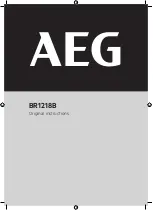
A111 Pulsed Coherent Radar (PCR)
Datasheet, v1.8
Page 21 of 34
2019-06-12
© 2019 Copyright by Acconeer
8
Layout Recommendations
A111 sensor free space integration should take the following into consideration:
•
Any material above the sensor should have as low permittivity and loss as possible, e.g. plastic or
glass with low permittivity.
•
To conclude on optimum distance from the sensor, a simulation/measurement investigation is
required.
The sensor antennas are of a folded dipole type, with its ground reference in the package ground plane,
extending over the whole area of the sensor. To further enhance the directivity of the sensor, the
package ground plane should be extended to the package by soldering all GND connections of the
sensor to the board top layer ground. This top layer ground plane below the sensor should be
continuous and should have low impedance.
The below table shows the sensor gain loss versus solid ground plane area.
Ground plane
area
Sensor gain loss
625 mm
2
0 dB
425 mm2
-0.2 dB
225 mm
2
-0.4 dB
127 mm
2
-2.2 dB
29 mm
2
-4.0 dB
Table 8.1 Simulated relative maximum gain
as function of extended solid ground plane
area. The area is quadratic.
It is recommended to keep the layout around XIN and XOUT symmetrical to the XTAL and
capacitors.
VIO_1a and VIO_1b are short circuit inside the sensor and are recommended to be connected to each
other on the PCB as well. VIO_2a and VIO_2b are short circuit inside the sensor and are
recommended to be connected to each other on the PCB as well. VIO_3a and VIO_3b are short circuit
inside the sensor and are recommended to be connected to each other on the PCB as well. It is
recommended to have decoupling capacitors on the supplies placed as close as possible to the supply
terminals. It is recommended as minimum 100 nF in parallel with 1 uF decoupling capacitance on
each supply.














































